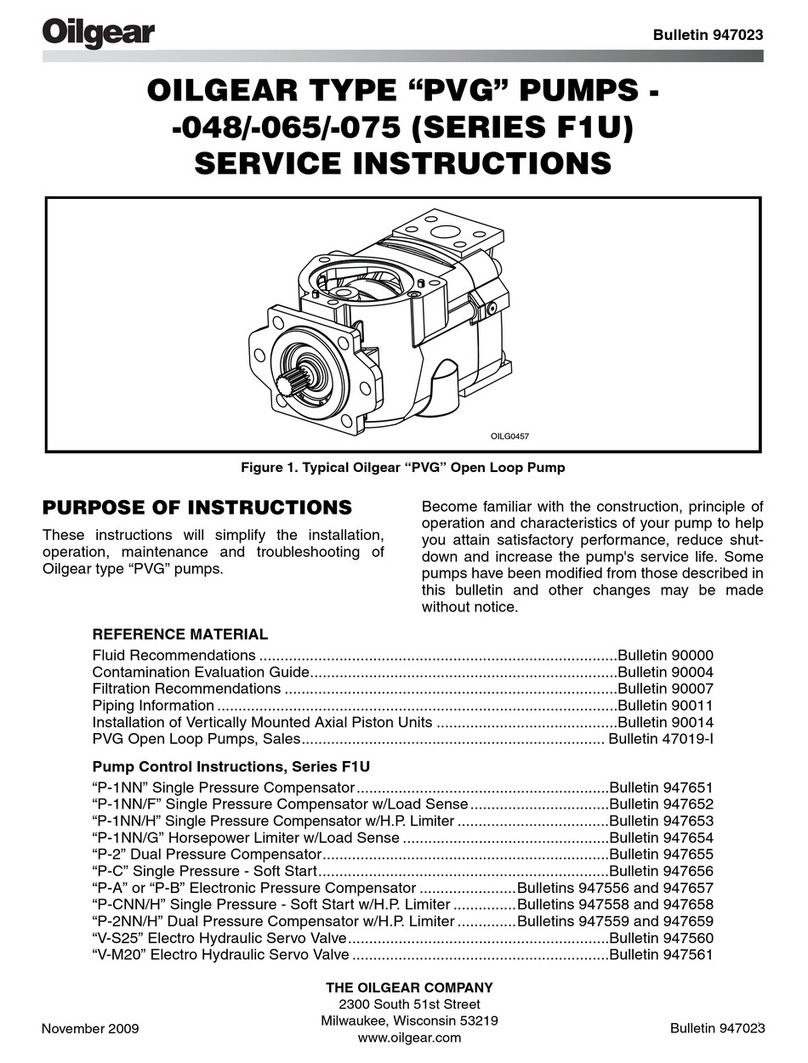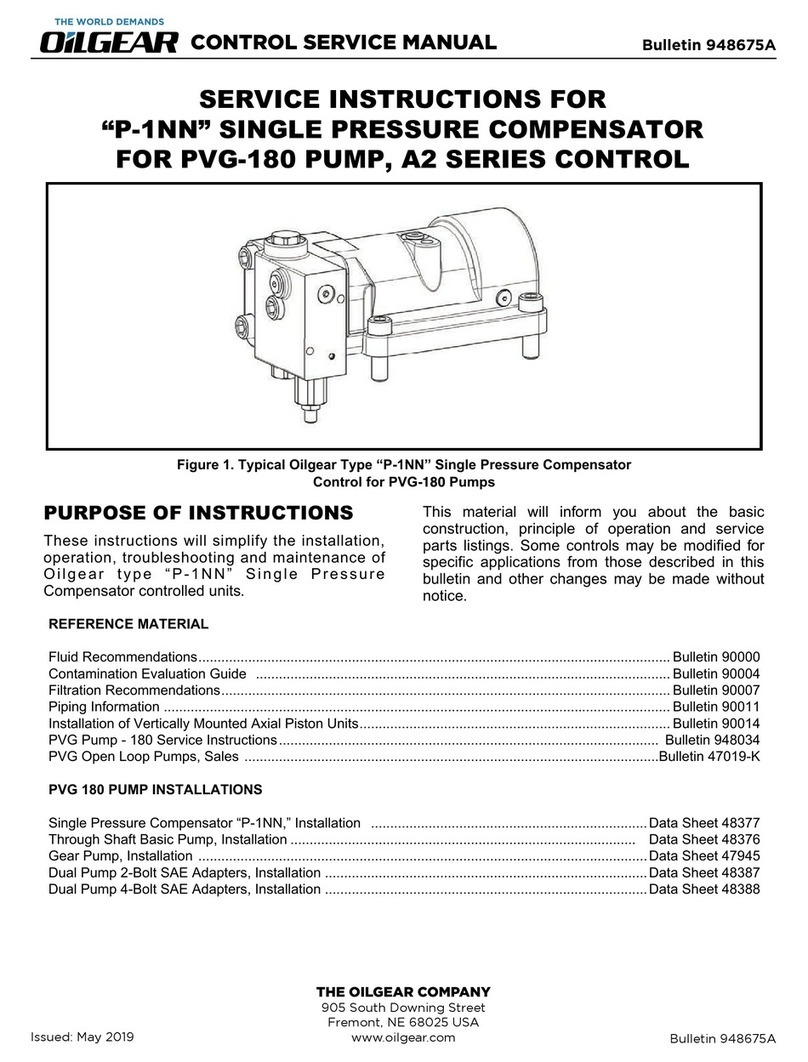
© 2019 THE OILGEAR COMPANY - ALL RIGHTS RESERVED
4
Safety First
Bulletin 948034A
Bulletin 948034A
PUMP SERVICE MANUAL
hoses and tubing must be
on a daily basis for leaks, cuts,
damage and improper
earance along any mounting frame for
damage before the unit is put into
e. Replace damaged hoses or hoses
ou suspect are damaged before the
system is returned to service! Hoses m
ust
replaced every two years. Failure to
operly inspect and maintain the system
y result in serious injury.
systems are hot. DO NOT
UCH! Serious personal injury may
from hot oil. When you have
working on the hydraulic
thoroughly clean any spilled oil
om the equipment. Do not spill any
draulic fluids on the ground. Clean any
draulic fluids from your skin as soon as
ou have completed maintenance and
s. Dispose of used oil and system
s as required by law.
correct hoses, fittings, and adapters
the correct SAE rating when
hoses to prevent possible
injury. Always replace hoses,
and adapters with replacements
have a proper, suitable, working
rating. Replacement hoses must
of the correct length and must comply
the hose manufacturerʼs and
gearʼs installation guidelines and
recommendations.
Hydraulic
hoses have the SAE ratings
on the hose to assist you in
the correct hose. The same
must supply any replacement
draulic hoses and fitting assemblies. As
xample: Brand “X” hose and brand “Y”
will not normally be compatible. No
wist” is allowed in the hydraulic hoses.
wist” may result in premature hose
e. This can cause serious injury.
for assistance when
Hydraulic cylinders can be holding
function in a certain position when the
pump is OFF. An example of this is
function being held in the lift or partial lift
position by the cylinders. If a hydraulic
line is removed or the hydraulic circuits or
controls are being worked on, gravity may
allow the function being held in position to
drop. All workers and personnel must
remain clear of these areas when working
on or operating the hydraulic system.
Block and secure all devices and
functions which apply before beginning
work or operation. Failure to comply with
this can result in serious injury or death.
Any hydraulic pipe which is replaced must
conform to SAE J1065 specifications. If
incorrect hydraulic pipe is installed, the
hydraulic system may fail, causing
serious injury. Damaged or leaking
fittings, pipes or hoses must be replaced
before the system is returned to service.
DO NOT heat hydraulic pipe. The carbon
content of this steel tube is such that if
heated for bending, and either water or air
quenched, the pipe may lose its ductility
and thereby be subject to failure under
high pressure conditions. Serious injury
can result. Damaged or leaking pipes must
be replaced before the system is returned
to service. Please contact Oilgear if you
require assistance or have questions.
All hydraulic pressure must be reliev
from the hydraulic system prior to remo
any components from the system. To
relieve the hydraulic pressure from t
hydraulic system, turn off the motor and
operate the control panel with the key in the
ON position. Failure to comply can result in
serious injury. If you have any questions
concerning relieving the h
from the system, please contact Oilgear.
!WARNING
!WARNING
!WARNING
!WARNING
!WARNING
!WARNING































